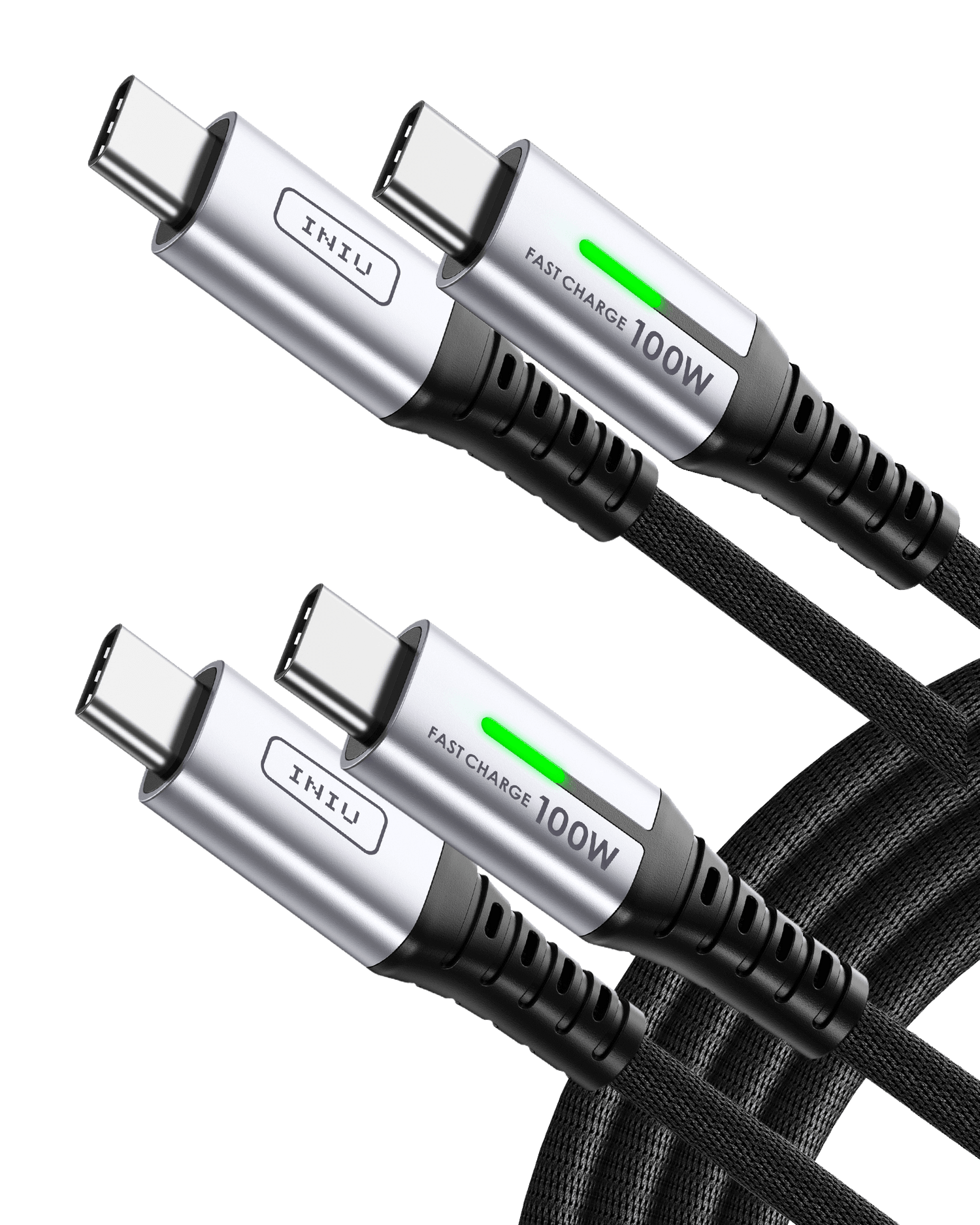
MagSafe vs Qi: Er MagSafe det samme som Qi-opladning?
Del
Trådløs opladning er blevet en standardfunktion i moderne teknologiske enheder og tilbyder en renere og mere bekvem opladningsoplevelse. Blandt de mest populære trådløse opladningsteknologier er MagSafe og Qi, hver med sine unikke karakteristika. For mange forbrugere kan det dog være forvirrende at forstå forskellene mellem de to.
Denne artikel dykker ned i de vigtigste forskelle, kompatibilitet og brugstilfælde for både MagSafe og Qi trådløs opladning, hvilket hjælper dig med at træffe et informeret valg.
Hvad er MagSafe Charging?
MagSafe-opladning er en proprietær trådløs opladningsteknologi udviklet af Apple. MagSafe-opladere, der først blev introduceret i iPhone 12, bruger magneter til at justere enheden perfekt i forhold til opladningspuden. Dette sikrer præcis placering, hvilket er en betydelig forbedring i forhold til traditionel trådløs opladning.
Den primære fordel ved MagSafe i forhold til standard trådløs opladning er dens evne til at levere stabil strøm med høj hastighed. MagSafe-opladere kan give op til 15W strøm til kompatible iPhones, hvilket gør det til en hurtigere opladning løsning til Apple-enheder som iPhone 12 og nyere modeller, Apple Watch og AirPods Pro.
Hvad er Qi trådløs opladning?
Qi er den mest udbredte standard for trådløs opladning, udviklet af Trådløst strømkonsortium (WPC). Qi-teknologi bruger elektromagnetisk induktion til at oplade enheder, hvilket betyder, at opladningspad'en og enheden ikke behøver at være præcist justeret.
Udviklingen af Qi-teknologi har ført til introduktionen af af Qi2 trådløs opladning, designet til at tilbyde forbedrede hastigheder og forbedret kompatibilitet på tværs af enheder.
Hvad er Qi2, og er det kompatibelt med Qi?
Qi2 trådløs opladning repræsenterer en betydelig opgradering af den traditionelle Qi-standard med fokus på større effektivitet og bredere kompatibilitet på tværs af brands. En nøglefunktion ved Qi2 er dens integration af en magnetisk strømprofil, der ligner Apples MagSafe, hvilket sikrer optimal justering og mere effektiv strømoverførsel.
De fleste enheder, der understøtter den originale trådløse Qi-opladning, er også kompatibel med Qi2. Det betyder, at Qi2-opladere kan forsyne en bredere vifte af enheder med strøm, herunder nyere Android-smartphones (som Samsung og Google Pixel), trådløse øretelefoner (som AirPods og Galaxy Buds) og smartwatches. Vigtigt er det, at Qi2 er bagudkompatibel med Qi-enheder, så du problemfrit kan bruge en Qi2 oplader med dine eksisterende Qi-aktiverede gadgets uden kompatibilitetsproblemer.
Hvad er forskellen mellem MagSafe og Qi trådløs opladning?
| FUNKTIONER | MAGSAFE | QI | QI2 |
| Opladningshastighed | Op til 15W | Fra 5W til 15W | Op til 15W |
| Justering | Magnetisk justering | Elektromagnetisk induktion | Magnetisk teknologi, der ligner MagSafe |
| Effektivitet | Høj | Gennemsnitlig | Høj |
| Case-kompatibilitet | Magsafe kompatible etuier | Forskellige sager | Forskellige sager |
| Enhedskompatibilitet | iPhone 12 og nyere, AirPods Pro og Apple Watch | Android-smartphones (Samsung, Google Pixel osv.), trådløse øretelefoner og smartwatches | Android-smartphones (Samsung, Google Pixel osv.), trådløse øretelefoner og smartwatches |
| Kompatibilitet med nyere standarder (Qi2) | Ikke fuldt integreret med Qi2 | Fuldt bagudkompatibel med Qi |
Har du en specifik enhed i tankerne, du leder efter oplad trådløst?
Ofte stillede spørgsmål om MagSafe og Qi
Q1: Hvilke enheder er kompatible med MagSafe-opladning?
A1: MagSafe-opladning er primært kompatibel med Apple-enheder, inklusive iPhone 12 og nyere modeller, AirPods Pro og Apple Watch.
Q2: Hvilke enheder er kompatible med trådløs Qi-opladning?
A2: Qi trådløs opladning er en bredt anvendt standard, der er kompatibel med en bred vifte af enheder, herunder de fleste Android-smartphones (som Samsung og Google Pixel), trådløse øretelefoner (såsom AirPods og Galaxy Buds), og smartwatches.
Q3: Er Qi2 kompatibel med MagSafe-enheder?
A3: Qi2 er designet til at være bagudkompatibel med Qi, og enheder, der understøtter MagSafe-opladning, fungerer generelt med Qi2-opladere. De fulde fordele ved magnetisk justering af MagSafe udnyttes dog muligvis ikke fuldt ud, medmindre Qi2-opladeren eksplicit understøtter denne magnetiske justeringsfunktion.
Q4: Kan jeg bruge en MagSafe-oplader med en Android-telefon?
A4: GenereltEn dedikeret MagSafe-oplader vil ikke fastgøres magnetisk til en Android-telefon eller give optimale opladningshastigheder, da MagSafes magnetiske system er Apples eget. Mange Android-telefoner understøtter dog standard Qi trådløs opladning, så en Qi-kompatibel del af MagSafe-opladeren kan muligvis stadig oplade den, men uden magnetisk justering eller optimeret hastighed.
Q5: Er MagSafe mere effektiv end Qi?
A5: MagSafe anses generelt for at være mere effektivt til kompatible Apple-enheder, primært på grund af dens magnetiske justering, som sikrer ensartet og optimal strømoverførsel på op til 15 W. Standard Qi-opladning kan have varierende effektivitet baseret på enhedens placering, men Qi2 sigter mod at bygge bro over dette hul med magnetisk justering og tilbyder høj effektivitet svarende til MagSafe.
Q6: Har jeg brug for et særligt etui til MagSafe- eller Qi2-opladning?
A6: Til MagSafe, et MagSafe-kompatibelt etui er anbefales for at sikre korrekt magnetisk justering og fastgørelseTil standard Qi- og Qi2-opladning er de fleste ikke-metalliske etuier kompatible. Qi2's magnetiske profil kan drage fordel af etuier designet til det, men det er ikke strengt nødvendigt til grundlæggende opladning.
Q7: Hvilken trådløs opladningsstandard skal jeg vælge?
A7: Dit valg afhænger i høj grad af dit enheds økosystem. Hvis du primært bruger Apple-enheder (iPhone 12 eller nyere, Apple Watch, AirPods Pro) MagSafe tilbyder den hurtigste og mest stabile opladningsoplevelseHvis du bruger en blanding af Android-enheder, trådløse øretelefoner eller andre Qi-kompatible gadgets, er Qi den universelle standard. Qi2 er ved at blive en alsidig løsning, der kombinerer Qis universalitet med MagSafes fordele ved magnetisk justering, hvilket gør den til et stærkt fremtidssikret valg.



